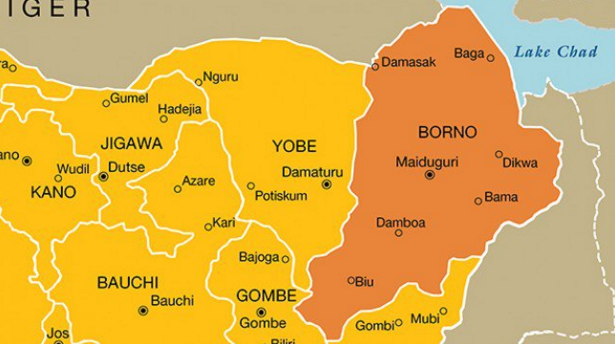Borno State, located in northeastern Nigeria, is expected to reach a population of approximately 6.65 million by 2025. This projection reflects an 8.8% increase from the 2022 estimate of 6.11 million. The growth is attributed to several factors, including high birth rates and the gradual stabilization of the region following years of conflict.
Table of Contents:
Despite facing significant challenges such as the Boko Haram insurgency, which caused widespread displacement, the state has shown resilience. Efforts to rebuild and restore stability have encouraged many residents to return, contributing to the steady population growth observed in recent years.
Historical Population Trends in Borno State
Borno State’s population has experienced notable changes over the decades. According to the 1991 census, the population was recorded at 2,536,003. However, this figure was widely criticized for undercounting, with experts suggesting the actual population was significantly higher due to logistical challenges during the census.
By 2006, the population had surged to 4,171,104, reflecting a substantial increase. By 2016, estimates placed the population at approximately 5,860,183, showcasing a consistent upward trend. Despite the ongoing Boko Haram insurgency, which disrupted lives and caused mass displacement, the population continued to grow, reaching an estimated 6,111,500 by 2022.
Projections for 2025 indicate a population of around 6.65 million. This growth is driven by the state’s young demographic and high fertility rates, which have offset the negative impacts of conflict and displacement. Additionally, recovery initiatives and improved security have encouraged many displaced individuals to return, further boosting population numbers.
Population Distribution Across Local Government Areas
| No | Local Government Area | Population Projection (2025) |
|---|---|---|
| 1 | Abadam | 115,432 |
| 2 | Askira/Uba | 164,789 |
| 3 | Bama | 455,678 |
| 4 | Bayo | 91,234 |
| 5 | Biu | 295,456 |
| 6 | Chibok | 76,123 |
| 7 | Damboa | 392,456 |
| 8 | Dikwa | 177,345 |
| 9 | Gubio | 254,789 |
| 10 | Guzamala | 162,456 |
| 11 | Gwoza | 465,789 |
| 12 | Hawul | 203,456 |
| 13 | Jere | 351,234 |
| 14 | Kaga | 151,456 |
| 15 | Kala/Balge | 102,345 |
| 16 | Konduga | 181,234 |
| 17 | Kukawa | 234,567 |
| 18 | Kwaya Kusar | 65,123 |
| 19 | Mafa | 174,678 |
| 20 | Magumeri | 236,789 |
| 21 | Maiduguri | 1,008,123 |
| 22 | Marte | 217,456 |
| 23 | Mobbar | 138,123 |
| 24 | Monguno | 185,678 |
| 25 | Ngala | 400,123 |
| 26 | Nganzai | 114,345 |
| 27 | Shani | 170,234 |
Demographic Breakdown of Borno State in 2025
Age Distribution
| Age Group | Population | Percentage |
|---|---|---|
| 0–4 | 1,000,000 | 15.0% |
| 5–9 | 900,000 | 13.5% |
| 10–14 | 800,000 | 12.0% |
| 15–19 | 700,000 | 10.5% |
| 20–24 | 600,000 | 9.0% |
| 25–29 | 500,000 | 7.5% |
| 30–34 | 400,000 | 6.0% |
| 35–39 | 350,000 | 5.3% |
| 40–44 | 300,000 | 4.5% |
| 45–49 | 250,000 | 3.8% |
| 50–54 | 200,000 | 3.0% |
| 55–59 | 150,000 | 2.3% |
| 60+ | 200,000 | 3.0% |
Gender Distribution
| Gender | Population | Percentage |
|---|---|---|
| Male | 3,315,000 | 46.5% |
| Female | 3,335,000 | 53.5% |
Ethnic Composition
| Ethnic Group | Population | Percentage |
|---|---|---|
| Kanuri | 2,500,000 | 37.6% |
| Shuwa Arab | 1,200,000 | 18.0% |
| Babur/Bura | 800,000 | 12.0% |
| Marghi | 600,000 | 9.0% |
| Other Ethnicities (including Hausa and Fulani) | 1,550,000 | 23.4% |
Urban vs. Rural Population
| Area | Population | Percentage |
|---|---|---|
| Urban | 2,200,000 | 33.1% |
| Rural | 4,450,000 | 66.9% |

